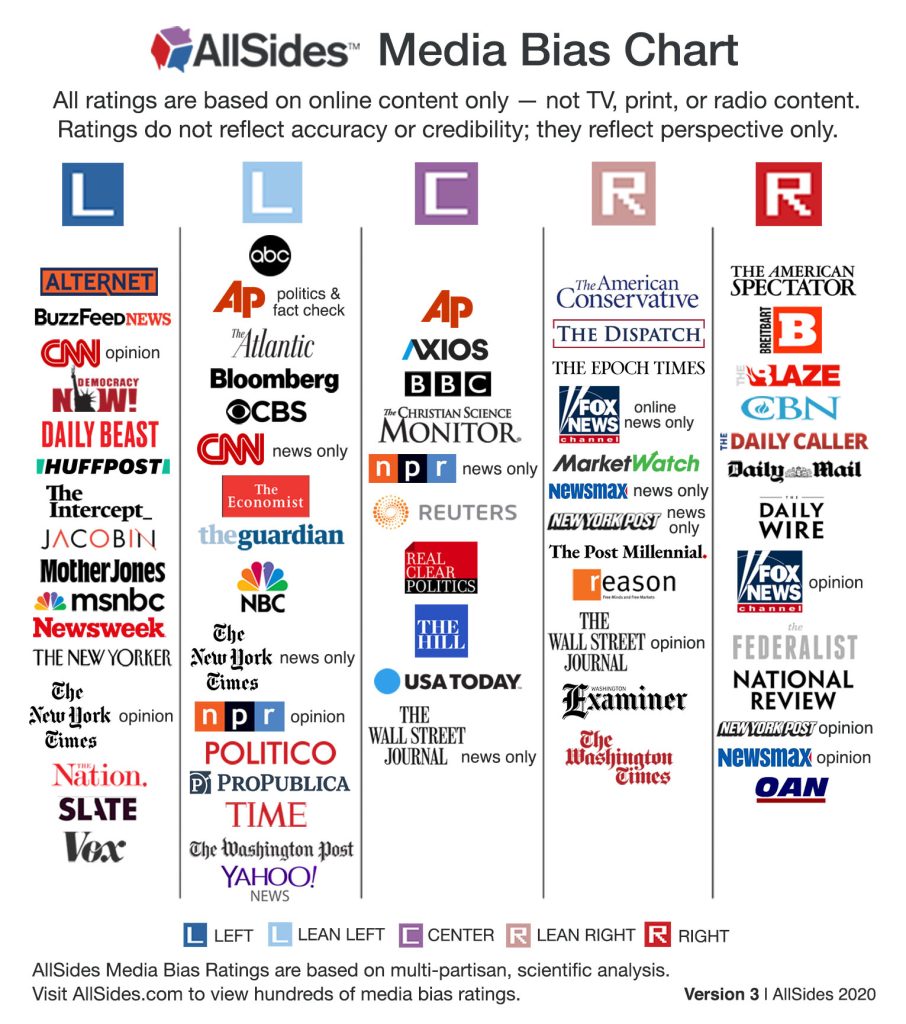Bias has been mentioned a few times in this chapter. Some sources may seem more susceptible to bias than others, but all of them carry some level of bias. So what is bias? According to the Oxford English Dictionary, bias is:
An inclination, leaning, tendency, bent; a preponderating disposition or propensity; predisposition towards; predilection; prejudice.
In other words, bias is a point of view that may influence how information is conveyed. This does not necessarily mean that the information in and of itself is incorrect, but the information may be presented in such a manner that it be interpreted to mean something else or be aligned to specific values. Bias is not always intentional—it can creep into resources without the creators realizing it. So, sometimes, we have to be extra careful when choosing resources and evaluate if there is a bias that is strongly influencing the trustworthiness of the resource that we use.
The image below comes from an organization that evaluates various media organizations or news-based organizations and places them on a scale of how they lean in social affairs: either to the “Right” or “Left,” where “Right-leaning” media organizations will have more conservative views about societal topics, and “Left-leaning” media organizations will have more liberal views about societal topics. You can read more about bias in the media here: Media Bias.

Text description of this infographic
Sources
“bias, adj., n., and adv.” OED Online, Oxford University Press, Sept. 2020.
Image: “AllSides Media Bias Ratings” by AllSides is licensed under CC BY-NC 4.0
